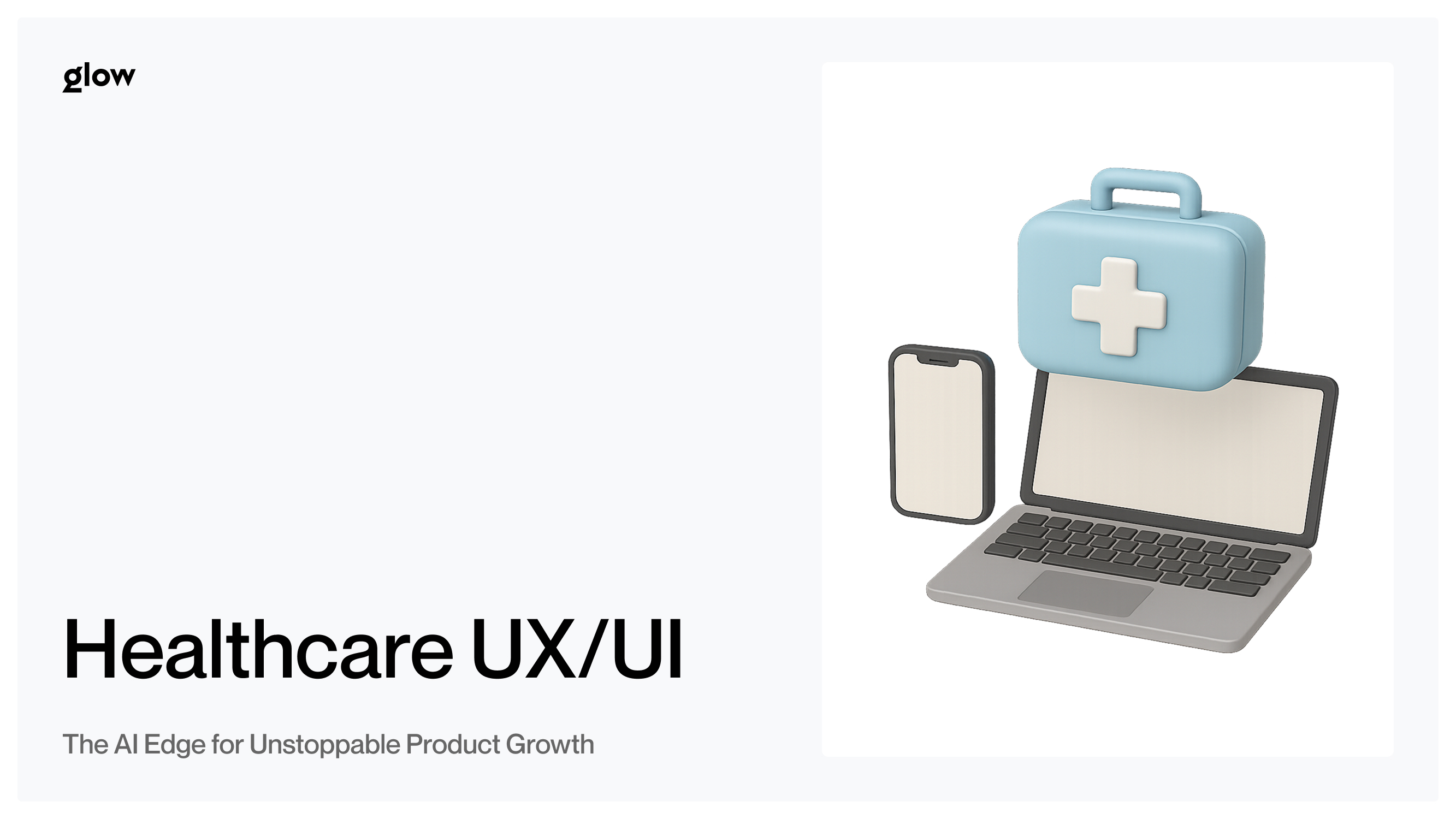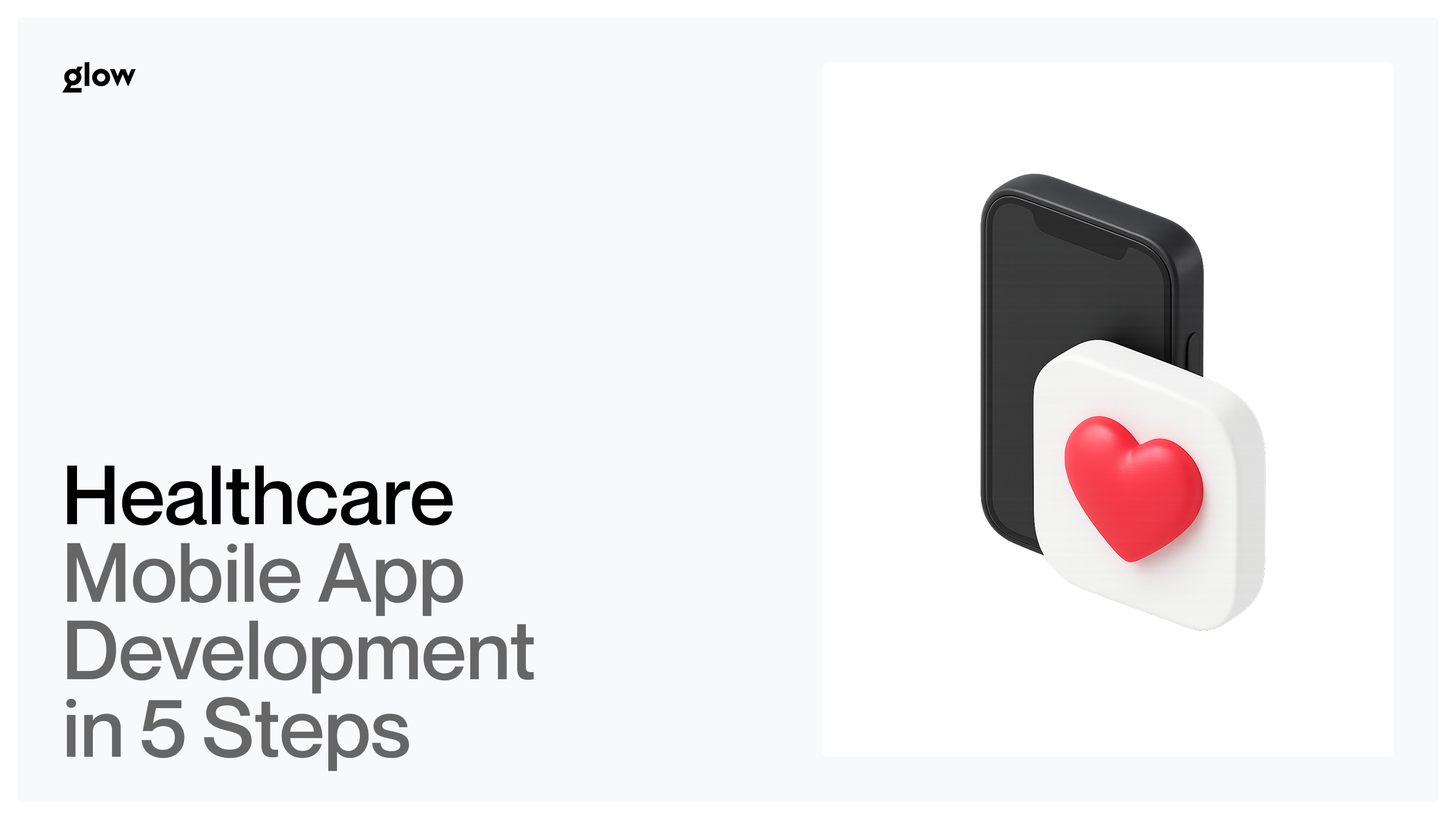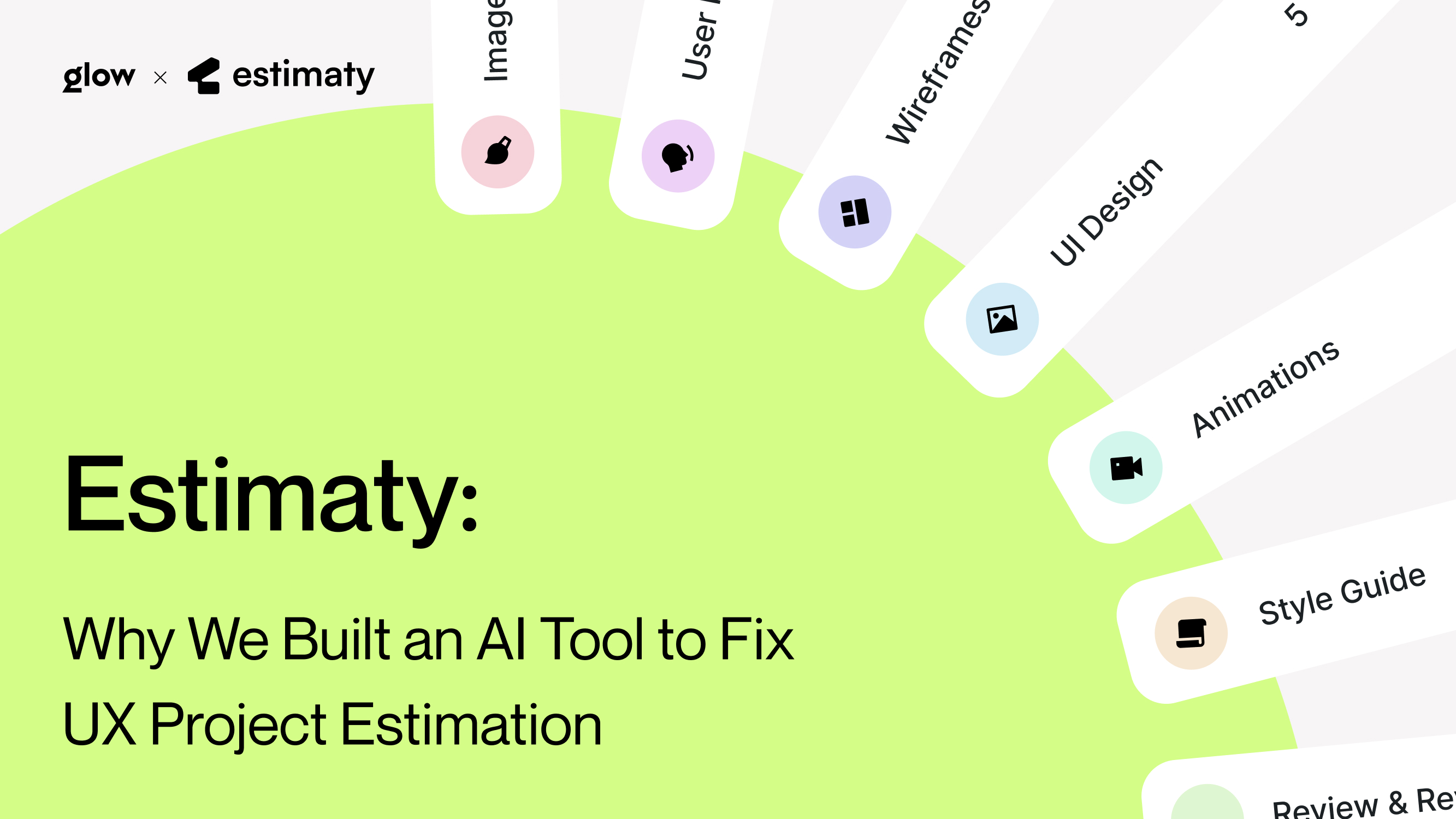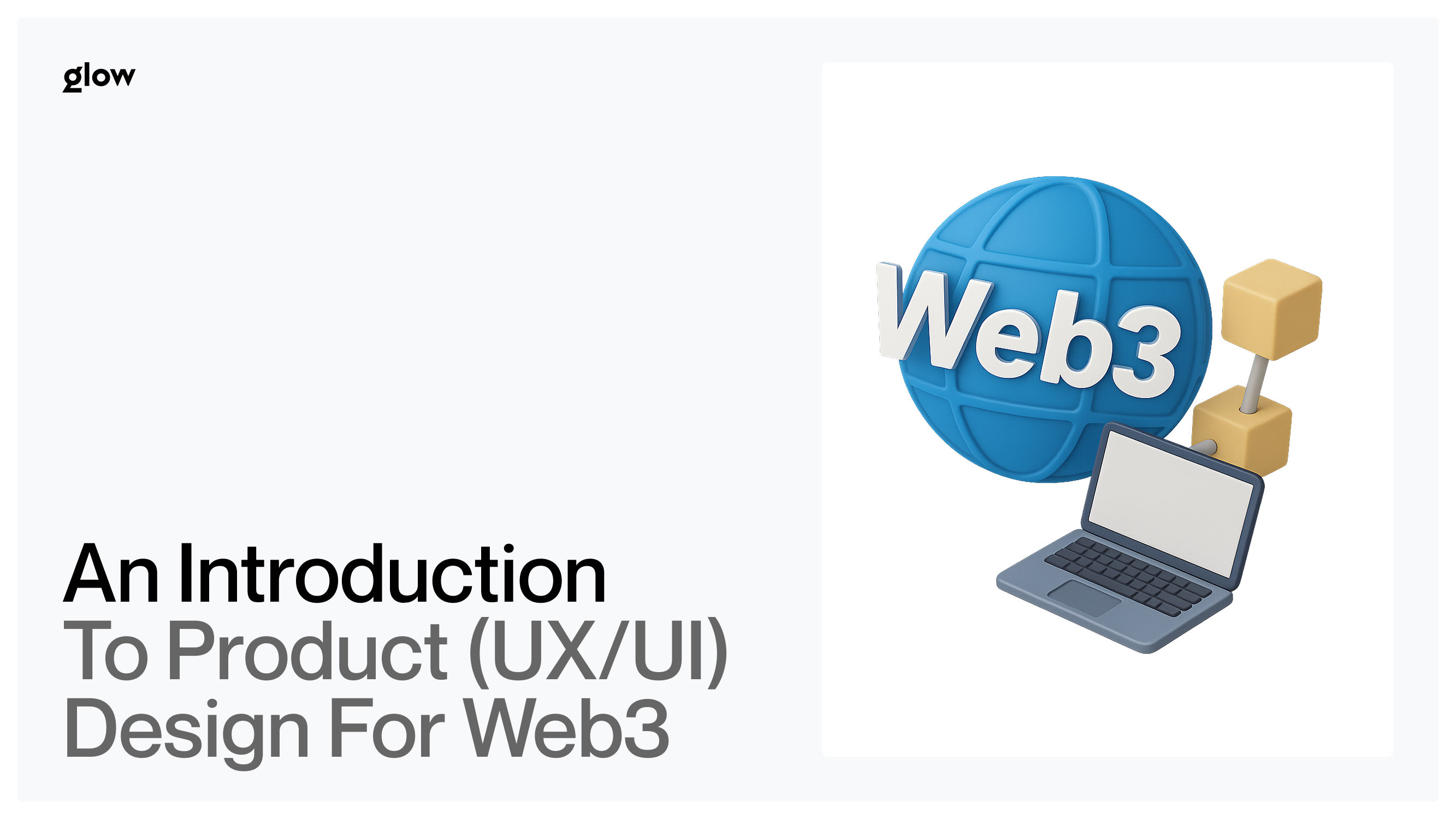In the world of medical technology, design is no longer just a pretty wrapper. Today, healthcare UX is a strategic asset. It determines the success or failure of a product on the market. Artificial intelligence is radically changing the rules of the game. It helps turn the design into a powerful engine for growth.
At Glow, we understand the importance of well-designed UX better than anyone. That's why, in this article, we'll explore how AI is revolutionizing medical UX and why mediocre design is killing healthcare products. You'll learn how to use UX in healthcare to achieve measurable business results and why the future belongs to those who act today.
Why "Good Enough" UX is Killing Healthcare Products

Most healthcare executives believe that if the interface works, that's enough. This approach is becoming a fatal mistake in an era of fierce competition. What would a potential customer choose: a minimalist website where everything is conveniently located or a website where information is scattered and the customer can't find anything? Poor healthcare UX isn't just annoying to users — it systematically undermines the entire business from within.
Modern users, whether doctors or patients, expect the same level of convenience from healthcare apps as they do from consumer products. When your product fails to meet these expectations, users mercilessly switch to your competitors. As a result, your company loses not only customers but also its reputation in the market.
The Silent Drain: Lost Users & Wasted Resources
Poor medical UX works like a hidden virus, gradually destroying the product from within. Users encounter frustration at every turn, with confusing navigation, slow loading times, and illogical processes. Doctors spend precious time fighting with the interface instead of treating patients.
The statistics are grim: 70% of users abandon a healthcare app after their first negative experience. Each lost user means not only lost revenue but also increased costs to attract new customers. UX in healthcare determines whether your product will be the solution to problems or the source of them.
The ineffective design creates a chain reaction of problems:
- Increased load on customer support due to constant user complaints
- Operating costs for training staff to work with complex interfaces increase
- Team productivity drops as they spend time explaining obvious things
- Employee motivation declines as they are forced to work with inconvenient tools
- Investors lose confidence in the company's ability to create competitive products
Resources that could be directed toward product development are spent on fixing the consequences of poor design. Companies find themselves in a vicious cycle: poor design requires additional support costs. It reduces the budget for improvements, which further exacerbates user experience issues.
Regulatory Minefields & Data Chaos
In healthcare, poor UX creates additional risks related to regulatory compliance. Confusing interfaces can lead to errors in the processing of personal data and result in violations of HIPAA and GDPR. Penalties for such violations can reach millions of dollars and destroy a company's reputation.
Key regulatory risks of poor healthcare UX:
- Accidental disclosure of patient personal data due to unclear privacy settings
- Incorrect completion of mandatory fields in medical forms
- Errors in logging user actions for auditing
- Unauthorized access to data through poorly secured interfaces
- Loss of critical data due to illogical saving processes
Poorly designed data management systems often lead to security breaches. Users who do not understand the interface's logic may perform actions that compromise patient confidentiality. Healthcare UX should not only be user-friendly but also guide users toward the right actions, minimizing the risk of violations.
Chaotic data management, often resulting from poorly designed interfaces, leads to the loss of critical information. In medicine, such losses can result in human lives being lost, not to mention the legal consequences for the company. Regulators are increasingly viewing poor UX as a factor contributing to violations, making quality design not just desirable but a mandatory requirement.
AI-Powered UX/UI: Your Blueprint for Healthcare Domination
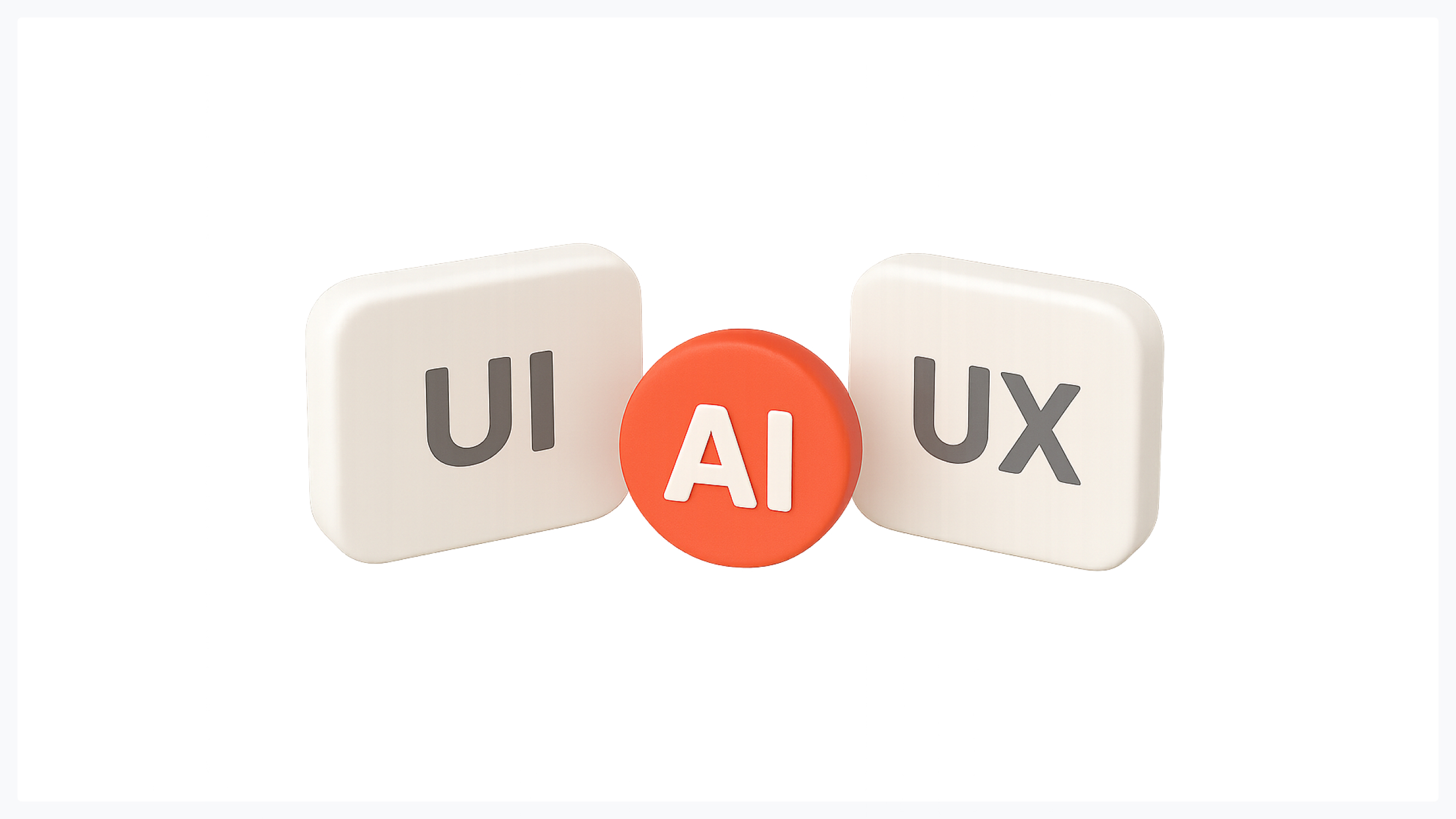
Artificial intelligence is transforming medical UX from a static tool into a dynamic, self-learning system. AI analyzes user behavior in real-time, predicts their needs, and automatically adapts the interface for maximum convenience.
Key benefits of AI in medical design:
- Automatic adaptation of the interface to each user's individual preferences
- Predictive behavior analysis for proactive problem-solving
- Dynamic optimization of workflows based on real-world usage data
- Intelligent content management based on context and urgency
- Automatic identification and elimination of bottlenecks in the user experience
The integration of AI into design processes opens up unprecedented opportunities for personalization and optimization. Machine learning identifies hidden patterns in user behavior that traditional methods cannot detect. It allows you to create interfaces that not only meet user needs but anticipate them. Modern algorithms are capable of processing millions of data points every second, creating a personalized experience for each user.
Hyper-Personalization: The Future of Patient Experience
AI is revolutionizing UX in healthcare by creating a unique experience for each user. Machine learning algorithms analyze preferences, behavioral patterns, and medical histories to create personalized interfaces in real time.
For doctors, this means interfaces that automatically adapt to their specialization and work habits. A cardiologist sees one set of tools and data, while a pediatrician sees something completely different. AI learns which features a doctor uses most often and brings them to the forefront.
Patients get interfaces tailored to their level of technical literacy, age, and medical needs. The system will offer large fonts and simplified navigation to elderly patients, while young users will see advanced functionality and detailed analytics.
Streamlining Complex Workflows: Beyond Automation
AI in healthcare UX goes far beyond simple automation. Intelligent systems analyze the entire workflow, identify bottlenecks, and suggest optimal solutions. It dramatically reduces the cognitive load on medical staff.
Smart interfaces predict the user's next actions and prepare the necessary information in advance. When a doctor opens a patient's chart, the system already displays relevant tests, medical history, and recommendations from colleagues. The time spent searching for information is reduced significantly.
AI optimizes the sequence of tasks, suggesting the most efficient order in which to perform them. The system takes into account the doctor's workload, the urgency of tasks, and the availability of resources to create personalized work plans.
Predictive Insights: Proactive Care Through Design
AI-powered medical UX doesn't just respond to user actions — it predicts their needs. Algorithms analyze historical data, identify patterns, and prepare solutions for potential problems in advance.
For patients, this means interfaces that remind them to take their medication, warn them about the need for preventive checkups, and even predict possible complications based on symptoms. The system becomes a personal medical assistant that works around the clock.
Doctors get predictive diagnostic tools integrated directly into the interface. AI analyzes symptoms, test results, and medical history to suggest the most likely diagnoses and treatment plans. It significantly enhances the quality of care and reduces the likelihood of medical errors.
From Idea to Market Leader: Glow Team's Unrivaled Process

In the world of medical technology, it's not enough to just create a good design. You need a systematic approach that turns UX in healthcare into a powerful tool for business growth. Our team has developed a unique methodology that guarantees measurable results for every client.
We don't just create beautiful interfaces — we design ecosystems that solve real business problems. Every design decision is backed by data and focused on achieving specific KPIs. Our approach enables clients not only to enhance the user experience but also to gain a competitive edge in the market.
Data-Driven Discovery: Uncovering Your True Potential
In-depth market and user analysis is the foundation of successful healthcare UX. We don't rely on assumptions or intuition. Every decision is based on thorough research of behavioral patterns, user needs, and market trends.
Our research methodology includes:
- Comprehensive audit of user journeys and touchpoints with the product
- In-depth analysis of the competitive environment and identification of market gaps
- Ethnographic research of medical staff workflows
- Quantitative analysis of usage and conversion metrics
- Qualitative interviews with key users and stakeholders
Our team conducts a comprehensive audit of existing solutions, identifying hidden problems and untapped opportunities. We analyze not only your product but also your competitors' ecosystem, finding unique niches for positioning.
Quantitative and qualitative research provides a complete picture of user needs. We use cutting-edge user research methods, including eye tracking, A/B testing, and in-depth interviews. The insights we gain become the foundation for creating medical UX that truly solves users' problems. We pay special attention to cross-cultural characteristics and differences in medical practices in different regions.
AI-Augmented Design Systems: Speed, Scale, & Consistency
Modern medical products require scalable solutions. We create intelligent design systems that use AI to generate components and ensure consistency across all touchpoints automatically.
AI analyzes the context of use and automatically adapts interface elements to different scenarios. Buttons, forms, information blocks — all components are dynamically adjusted to the needs of a specific user and situation.
This approach dramatically accelerates the development and implementation of new features. The team can focus on strategic tasks while AI handles the technical implementation of the design. UX in healthcare becomes a catalyst for innovation rather than a limitation.
Measurable Impact: UX/UI That Delivers ROI
We focus on business results, not pretty pictures. Every design decision is aimed at improving key metrics: conversions, user retention, and reduced operating costs. Healthcare UX must be financially viable and generate a profit.
Our team implements analytics systems that track the impact of design on business metrics in real-time. We observe how changes in the interface impact user behavior and the company's financial performance.
Clients receive detailed reports on the ROI of their design investments. We present specific figures, including the percentage increase in conversion, the amount of money saved through process optimization, and the change in user loyalty. Medical UX is becoming a source of measurable value for businesses.
Ready to Redefine Healthcare UX?
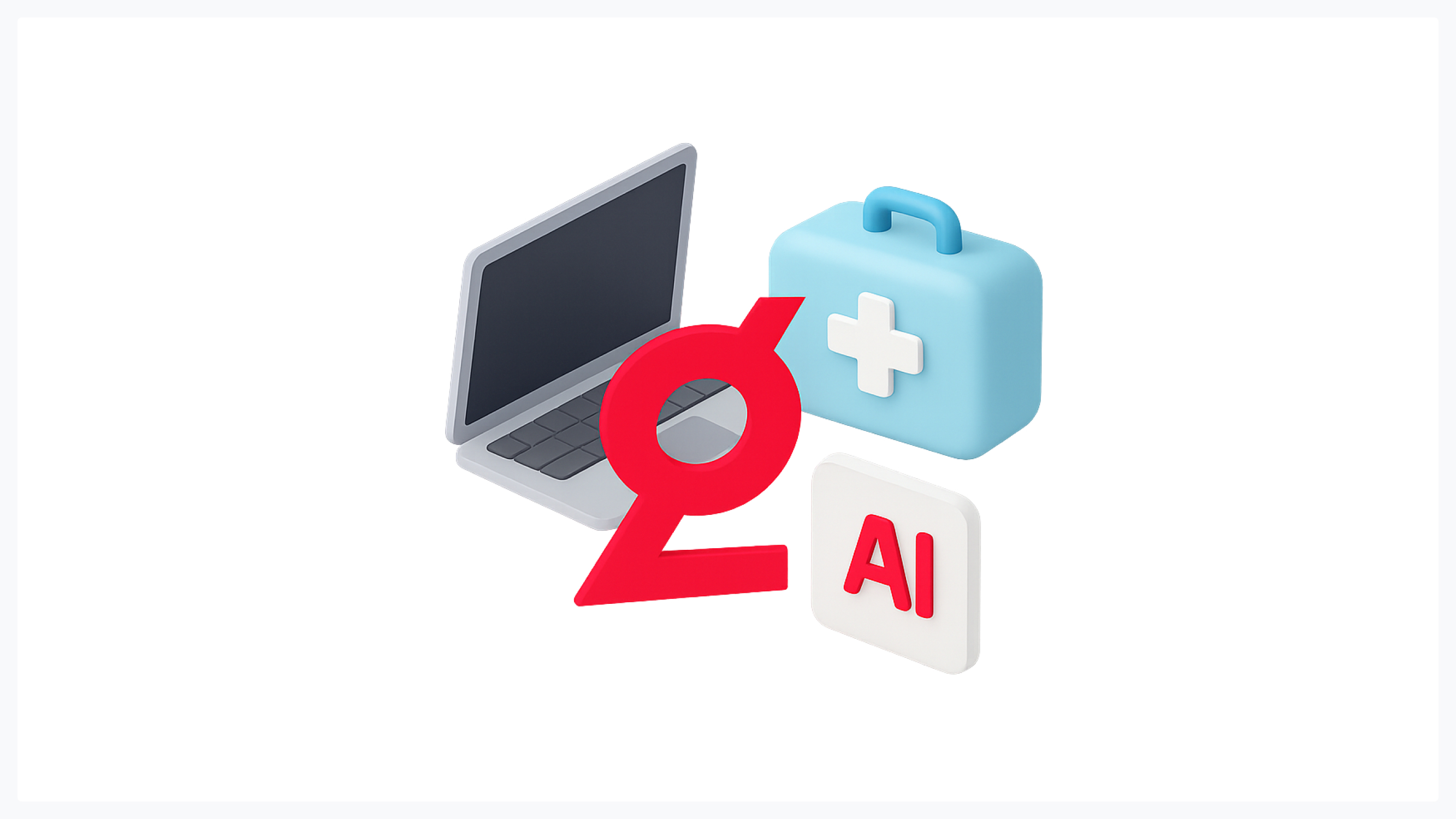
The future of medical technology belongs to those who act today. While your competitors are content with mediocre solutions, you have a unique opportunity to capture market leadership through revolutionary healthcare UX.
AI is radically changing the rules of the game, opening up unprecedented opportunities for innovation in medical UX. Companies that are the first to master these technologies will gain an undeniable competitive advantage. The time to act is now.
We invite you to a strategic partnership that will transform your product and business. Our team is ready to apply our entire arsenal of cutting-edge technologies and proven methodologies to create UX in healthcare that will become your key competitive advantage.
Don't let your competitors get ahead of you. Contact us today and start your journey to dominance in the medical technology market. Your users and your business deserve the best.


